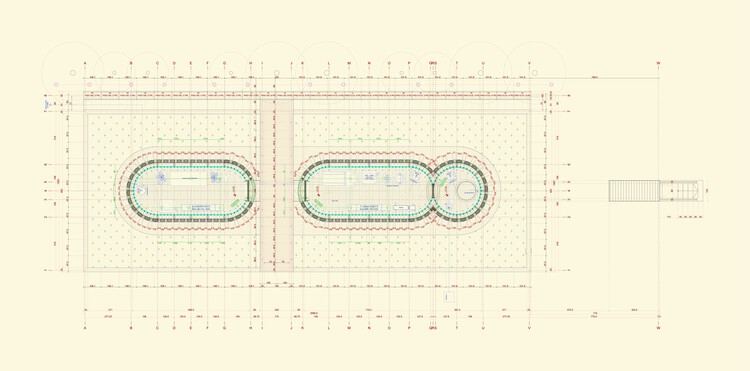
-
Architects: Cruz•Mandiola - Arquitectura & Objetos, elton_léniz
- Year: 2021
-
Photographs:Francisco Cruz
-
Manufacturers: RCubo




Text description provided by the architects. The YR Pavilion is an unusual project. A couple - both art collectors - want to expand their garden with the aim of creating a small private park. To do this, they annex a new plot of land next to the existing house, which must include a "Folie", a habitable sculpture composed of three installations: a massage room, a space for exercise, and a bathroom. The new object must be part of the existing sculpture collection, in addition to allowing for the respective functions.



The extension of the park, with its centennial trees, obliges us to be careful with orientation and placement decisions. Initially, three circular crystalline forms are proposed, composed of an inner skin of glass bricks, with an outer skin of concrete bricks.



Secondly, they are extended and intersected to form two large volumes: on one side, an isolated massage room, and on the other, the exercise space and the bathroom. Four types of concrete brick were designed to allow for the total configuration of the exterior envelope, necessary to control solar radiation and provide privacy to each of the spaces. The metal structure is hidden between both layers and supports all the bricks, forming a collaborative system in which all the pieces participate.


The project is conceived as an "Integral Work of Art", an opportunity to design and manufacture each of the elements that make it up: Concrete Bricks, Ventilation Grilles, Sinks, Control Panels, Doors, Bronze Handles, Basalt Benches, Acoustic Ceilings, Perimeter Lighting Hardware, and Flooring, among others.

This merely inhabitable sculpture of 45 m2 appears as a rigid and monolithic block during the day but allows indirect light to enter through the offset between each brick. At nightfall, it becomes fragile and slender, and the interior light is projected toward the exterior, illuminating the garden that accompanies it. Its construction understood as a craft process, is the result of the intersection between Architecture, Sculpture, and Art.
























